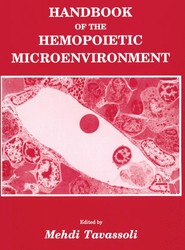(To see other currencies, click on price)
MORE ABOUT THIS BOOK
Main description:
"After being frequently urged to write upon this subject, and as often declining to do it, from apprehension of my own inability, I am at length compelled to take up the pen, however unqualified I may still feel myself for the task. " William Withering, M. D. ' I have yet to find a description or a quote that better summanzes my initial ambivalence towards embarking on such an endeavor as partici pating in putting together this monograph. The impetus for The Red-Cell has been a simple, genuine Membrane: A Model for Solute Transport desire to bring together an authoritative account of the' 'state of the art and knowledge" in the red-ceIl-membrane transport field. In particular, it seems important to emphasize the pivotal role the red cell has played for several decades in the discovery and the elucidation of mechanisms of plasma-membrane transport processes. It is only with such knowledge that we can hope to push ahead and make progress in this exciting, multifaceted area. Eventually, one hopes to not only further our knowledge of red cells, but apply the newly gained insights to any other of the plasma membrane. cell with the common denominator In this compendium of reviews, the reader will find that the term model will take on a variety of gists and meanings. In some chapters, the red cell has been chosen as a model membrane solely on the basis of its preeminent design and simplicity.
Contents:
1. Introduction.- Why Red Cells?.- 1. Introduction.- 2. Transport Systems in Mature Red Cells.- 2.1. Transport of Inorganic Ions.- 2.2. Transport of Organic Molecules.- 2.3. Comparative Aspects.- 2.4. Conclusion.- 3. Advantages of Red Cells.- 4. Conclusion.- References.- Need and Applications of Integrated Red Cell Models.- 1. Introduction.- 2. General Considerations.- 2.1. Purpose and Requirements of an Integrated Red-Cell Model.- 2.2. Components of an Integrated Red-Cell Model.- 2.3. The Computation Strategy.- 3. Examples.- 3.1. Computing a Reference Steady State for a Reticulocyte.- 3.2. Experimental Test of Predictions of the Behavior of K-Permeabilized Red Cells.- References.- 2. Biochemistry and Biophysics.- Molecular Structure of the Na,K,-ATPase.- 1. Introduction.- 2. The Subunits and Their Function.- 2.1. ?-Subunit.- 2.2. ?-Subunit.- 2.3. ?-Subunit.- 3. The Structure of the ?-Subunit.- 3.1. Molecular Weight.- 3.2. Isoforms.- 3.3. ?-Subunit in the Red Blood Cell.- 3.4. Primary Structure.- 3.5. Secondary and Tertiary Structure.- 4. The Structure of the ?-Subunit.- 4.1. Molecular Weight.- 4.2. Primary Structure.- 4.3. Secondary and Tertiary Structure.- 5. Stoichiometry.- 5.1. Mass Ratios.- 5.2. Chemical Cross-Linking Studies.- 5.3. Functional Unit.- 6. Structure-Function Relationships.- 6.1. Amino-Terminal Domain.- 6.2. Conformational Transitions and Ion Binding.- 6.3. ATP Binding and Hydrolysis.- 6.4. Binding of Cardiac Glycosides.- 7. Summary.- References.- Enzymatic and Functional Aspects of Na+/K+ Transport.- 1. Introduction.- 2. Modes of Pump Behavior and Their Enzymic Correlates.- 2.1. Na/Na Exchange, K/K Exchange, Uncoupled Na+ Efflux and Uncoupled K+ Efflux.- 2.2. Affinities of Cations and the Role of Protons.- 3. Are There Characteristics of the Na,K-ATPase Unique to Red Cells?.- 3.1. Effects of Temperature.- 3.2. Interactions with Ouabain.- 3.3. Intracellular Ca2+.- 3.4. Membrane-Bound Glycolytic Enzymes and Their Interactions with Na,K-ATPase via Compartmentalized ATP.- 4. Functional Variants of the Na,K-ATPase: Sodium Pump Behavior in Genetically Dimorphic Sheep Red Blood Cells.- 5. Conclusion.- References.- The (Ca2+ + Mg2+)-ATPase: Purification and Reconstitution.- 1. Introduction.- 2. Purification of (Ca2+ + Mg2+)-ATPase.- 2.1. Early Attempts.- 2.2. Calmodulin-Affinity Chromatography.- 3. Kinetic Properties of the Purified Enzyme.- 3.1. Requirement for Phospholipids.- 3.2. Calmodulin-Insensitive Forms.- 4. Reconstitution of (Ca2+ + Mg2+)-ATPase.- 4.1. Early Attempts.- 4.2. Principle of the Methods.- 4.3. Characterization of the Proteoliposomes.- 4.4. Properties of the Reconstituted Enzyme.- 4.5. Mechanism of Ca2+ Transport.- 5. Summary and Conclusions.- References.- Catalytic Mechanisms of the Ca-Pump ATPase.- 1. Introduction.- 2. The Main Properties of the Transport of Ca2+ and the Hydrolysis of ATP by the Ca-Pump ATPase.- 2.1. Transport of Ca2+.- 2.2. Hydrolysis of ATP.- 2.3. Elementary Steps of ATP Hydrolysis.- 2.4. Phosphatase Activity of the Ca-Pump ATPase.- 2.5. Activators of the Ca-Pump ATPase.- 2.6. Inhibitors of the Ca-Pump ATPase.- 3. Summary and Conclusions.- References.- Regulation of the Plasma Membrane Ca2+-Pump.- 1. Introduction.- 2. Does the RBC Need a Regulated Ca2+-Pump?.- 3. ATP as a Regulator of the Ca2+ -Pump.- 4. Calmodulin as a Regulator of the Ca2+-Pump.- 5. Anti-CaM Drugs as Modifiers of the Ca2+-Pump.- 6. Lipids as Regulators of the Ca2+-Pump.- 7. Mechanically Induced Ca2+ Permeation as a Regulator of the Ca2+-Pump.- 8. Diseases as Modifiers of the Ca2+-Pump.- 9. RBCs as Models for Ca2+ Transport.- 10. Summary.- References.- The Anion Transport Protein: Structure and Function.- 1. Introduction.- 2. Structural Domains.- 2.1. Cytoplasmic Domain.- 2.2. Membrane Domain.- 3. The Anion Transport Pathway.- 3.1. Minimum Structure Required for Transport.- 3.2. Extracellular Aspect: The Stilbenedisulfonate Site.- 3.3. Role of Amino Groups in Anion Transport.- 3.4. Histidine Modification.- 3.5. Arginine Residues and Carboxyl Groups.- 3.6. Other Amino Acid Residues.- 3.7. Transport-Related Conformational Changes.- 4. Oligomeric Structure.- 5. Transport Activities of Band 3 Other than Cl-HCO3 Exchange.- 5.1. Anion Selectivity.- 5.2. Proton Transport.- 5.3. Anion Conductance.- 5.4. Postulated Water Transport.- 6. Band 3-Related Proteins in Nonerythroid Cells.- 6.1. Stilbenedisulfonate-Inhibitable Anion Transport Processes.- 6.2. Na-Independent Cl-HCO3 Exchange in Nonerythroid Cells.- 6.3. Acid-Secreting Epithelia.- 6.4. Cells Not Involved in Net Acid or Base Secretion.- References.- Kinetics of Anion Transport.- 1. Introduction.- 1.1. Functions of Anion Exchange.- 1.2. Basic Transport Characteristics.- 2. Models for Tightly Coupled Anion Exchange.- 2.1. Comparison of Ping-Pong and Simultaneous Models.- 2.2. Evidence for the Ping-Pong Model.- 3. Nature of the Transporting Conformational Change.- 3.1. Kinds of Conformational Change.- 3.2. Conformational Distribution and Asymmetry.- 4. Noncompetitive Inhibitors as Probes of Conformation.- 4.1. Effects of Transport Site Orientation.- 4.2. Effects of Substrate Binding.- 4.3. Asymmetry of Chloride-Loaded Sites.- 5. Transport Mechanism: Thin Barrier Vs Zipper.- 6. Net Anion Transport.- 6.1. Involvement of Capnophorin.- 6.2. Mechanism of Net Anion Transport.- 6.3. Rates of Slippage, Diffusion, and Exchange.- 7. Relation to Other Transport Systems.- References.- Ca2+-Activated Potassium Channels.- 1. Introduction.- 2. Some Experimental Points.- 3. Properties of Ca2+ -Dependent K+ Transport.- 3.1. Mechanisms of Activation.- 3.2. Selectivity and Kinetics.- 3.3. Inhibitors.- 3.4. Regulation of the Activity.- 3.5. All or Nothing Behavior.- 3.6. Molecular Substrate.- 4. Summary.- References.- Amino Acid Flux Across the Human Red Cell Plasma Membrane.- 1. Introduction.- 2. Na+-Independent Flux.- 2.1. L System.- 2.2. Ly System.- 2.3. T System.- 3. Na+-Dependent Flux.- 3.1. ASC System.- 3.2. Gly System.- 4. Nature of the Amino-Acid Transport Binding Sites.- 5. Function of Red-Cell Amino-Acid Transport.- 6. Conclusions and Summary.- References.- Hexose Transport Across Human Erythrocyte Membranes.- 1. Introduction.- 2. Perspective.- 3. Catalytic Properties of Human Red-Cell Sugar Transport.- 4. Models for Sugar Transport.- 5. Interpretation of Transport Data.- 5.1. Testing the One-Site Carrier.- 5.2. Testing the Two-Site Carrier.- 5.3. Conclusions.- 6. A One- or Two-Site Transport Mechanism?.- 6.1. Transport Studies.- 6.2. Ligand Binding Studies.- 6.3. Fluorescence Quenching Studies.- 6.4. Conclusions.- 7. Factors Influencing Transport.- 7.1. Compartmentalization of Intracellular Glucose.- 7.2. Transport in Fresh, Outdated, and Metabolically Depleted Human Blood.- 7.3. Sugar Transport in Red-Cell Ghosts and Effects of ATP.- 7.4. Inconsistencies.- 7.5. Conclusions.- 8. Summary.- 8.1. The Mechanism of Sugar Transport.- 8.2. Regulation of Sugar Transport.- 8.3. Sugar Transport in Other Cell Types.- References.- Chloride-Dependent Cation Transport in Human Erythrocytes.- 1. Introduction.- 2. The NaKCl Cotransport System.- 2.1. Transport Modalities and Substrate Kinetics for Na, K, and Cl.- 2.2. Inhibitor Sensitivity and Binding.- 2.3. Effect of Variation in Cell Volume In Vitro.- 2.4. Intracellular Energy Sources and Other Ligands.- 2.5. Role in the Human Red Cell: Net Flux Measurements and Regulation.- 3. Loop Diuretic-Insensitive Chloride-Dependent K Fluxes.- 3.1. Other Signals Switching on KCl Cotransport.- 4. Summary and Conclusions.- References.- 3. Pharmacology.- Pharmacological Modification of the Red Cell Ca2+-Pump.- 1. Introduction.- 2. Red-Cell Preparations to Study Molecular Drug Action.- 2.1. Intact Red Cells.- 2.2. Reversibly Hemolyzed Ghosts.- 2.3. White-Ghost Membrane Fragments.- 2.4. Inside-Out Vesicularized Membrane Fragments.- 3. Drugs that Modulate the Ca2+ -Pump.- 3.1. Inhibitors.- 3.2. Activators of the Ca2+-Pump.- 4. Conclusions and Outlook.- References.- Irreversible Modification of the Anion Transporter.- 1. Introduction.- 1.1. Physiological Aspects.- 1.2. Structure and Function.- 2. Functional Groups Identified by Acid-Base Titration.- 2.1. Extracellular Titration.- 2.2. Effects of Substrate Ions.- 2.3. Effects of Transport Coupled Conformational Changes.- 2.4. Summary.- 3. Modification of Arginine Residues.- 3.1. Phenylglyoxal Modification of the Transport System.- 3.2. Characterization of the Exofacial Modification.- 3.3. Instantaneous Reversible Phenylglyoxal Inhibition.- 3.4. PG Inactivation and Inhibitor Binding.- 3.5. Summary.- 4. Selectivity of Arginine Modification.- 4.1. Localization of the Exofacial Essential Arginine Groups.- 4.2. Modification from the Intracellular Side.- 4.3. Summary.- 5. Modification of Carboxyl Groups.- 5.1. Inactivation of Anion Transport by Carbodiimides.- 5.2. Stimulation by Nucleophile Reaction.- 5.3. Inactivation and Stilbene Disulfonate Binding.- 5.4. Extracellular Titration After Modification.- 5.5. Summary.- 6. Identification of Functional Important Carboxyl Group(s).- 6.1. Carbodiimide-Modified Carboxyl Groups.- 6.2. Modification with Woodward's Reagent K.- 6.3. Summary.- 7. Transport Pathway Models.- 7.1. The Exofacial Substrate and Inhibitor Binding "Sites".- 7.2. Translocation Models.- 7.3. Possible Location and Function of the Modified Groups.- 7.4. Summary.- References.- Drug Actions on Potassium Fluxes in Red Cells.- 1. Introduction.- 2. Chemically Induced Potassium Transport in Red Cells.- 2.1. General Increase in the Cation Permeability of the Red Cell Membrane-SH Group Reagents.- 2.2. Alkali Ion Transport Mediated by Ionophores.- 2.3. Selective Increase in the Potassium Permeability-The Role of Intracellular Calcium.- 2.4. Potassium-Chloride Cotransport Induced by NEM.- 3. Inhibitors of "Nonpump" Potassium Transport Pathways in Red Cells.- 3.1. Inhibitors of the Ca2+-Induced K+ Transport.- 3.2. Inhibitors of the Na+/K+/Cl- Cotransport.- 3.3. Inhibitors of the K+/Cl- Cotransport.- 4. Summary and Conclusions.- References.- 4. Pathophysiology.- Membrane Lipid Changes in the Abnormal Red Cell.- 1. Introduction.- 2. Lipid Compostition of Erythrocyte Plasma Membrane in Normal and Abnormal Conditions.- 2.1. Lipid Composition of the Normal Erythrocyte Plasma Membrane.- 2.2. Lipid Composition of the Abnormal Erythrocyte Plasma Membrane.- 3. Conclusions.- References.- Calcium Fluxes in Pathologically Altered Red Cells.- 1. Introduction.- 2. Tools for Study of Calcium Flux.- 2.1. Active Ca2+ Transport.- 2.2. Passive Ca2+ Flux.- 2.3. Cellular Calcium Homeostasis.- 2.4. Ionized Cellular Calcium.- 2.5. Some Pitfalls.- 3. Sickle Cell Anemia.- 3.1. Ca2+ Homeostasis.- 3.2. Endocytic Vacuoles.- 4. ?-Thalassemia.- 5. Glucose-6-Phosphate Dehydrogenase Deficiency.- 5.1. Effect of Oxidant Drugs.- 5.2. Favism.- 6. Hereditary Spherocytosis.- 7. Malaria.- 8. Cystic Fibrosis.- 8.1. (Ca2+ + Mg2+)-ATPase.- 8.2. Ca2+ Fluxes.- 9. Hypertension.- 10. Affective Disorders.- 11. Other Diseases.- 11.1. Ca2+ Uptake.- 11.2. Active Ca2+ Transport.- 12. Summary and Conclusions.- References.- Mechanisms of Red Cell Dehydration in Sickle Cell Anemia: Application of an Integrated Red Cell Model.- 1. Introduction.- 1.1. Cation and Water Content of Dense SS Cells.- 1.2. Life Cycle of Dense SS Cells In Vivo.- 1.3. Pathophysiological Significance of Dense SS Cells.- 2. Mechanisms of Red-Cell Dehydration.- 2.1. Activation of the Calcium-Dependent K Channel in SS Cells.- 2.2. Role of the Na-Pump in SS Cell Dehydration.- 2.3. Possible Role of K:Cl Cotransport in SS Cell Dehydration.- References.
PRODUCT DETAILS
Publisher: Springer (Humana Press Inc.)
Publication date: September, 2011
Pages: 495
Weight: 759g
Availability: Available
Subcategories: Physiology
From the same series















